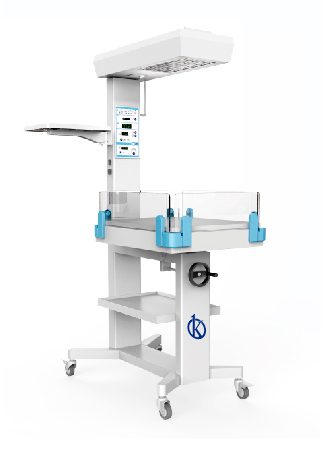Childhood heaters are medical equipment designed to provide constant heat to low-weight newborns who have thermoregulation problems or who need constant interventions by medical staff, as their purpose is to maintain a temperature-controlled environment to help newborns maintain their body temperature.
These equipments have a heating element to provide a temperature not higher than 39 °C radiant type, regulator to stabilize the temperature of the newborn and maintain the temperature or the selected heating power, as well as allows monitoring of control parameters.
Types of children’s heaters
Children’s heaters can be classified into two groups, according to the mechanism of control of their operation:
- Children’s heaters with manual control: In this type of children’s heaters the variable that is controlled is the maximum temperature that must be provided by the heat source fixed by the operator. It requires constant supervision by the health personnel in charge, because failure to perform adequate supervision can lead to the risk of burns in the patient due to hyperthermia. Usually to avoid this situation most of these devices present an alarm, which reminds the operator to check the temperature of the newborn.
- Children’s heaters with automatic control: Unlike heaters with manual control, the variable that is controlled in these devices is the body temperature of the newborn, they have two types of control for its operation, the first alternates the state of the heater from on to off in a similar way to the heaters with manual control, being a system of caution in case of failure of the sensors, the second consists of progressively regulating the heat emitted by the heater as a function of the changes of temperature of the baby, these changes are quickly detected by sensors that go directly to the skin of the newborn. In other words, this type of heaters the heating elements turn on and off in response to the baby’s temperature changes.
How does a children’s heater work?
In children’s heaters heat transfer occurs mainly by radiation, i.e. the thermal energy source is separated from the heat receptor (newborn) and heat travels through the air in the form of electromagnetic waves. The main components of children’s heaters are:
- The heat source: This can be of various types, such as quartz, ceramic or infrared light tubes; diffusers or incandescent lamps.
- Control unit: This in turn includes audible and visible alarms, manual heater control and servo controlled control.
- Platform and chassis holder: It is the base on which the mattress is located, with transparent walls and X-ray plate holders.
What do we offer you in Kalstein?
At Kalstein we are MANUFACTURERS of medical equipment of the highest quality at the best PRICES in the market. This time we present our children’s heater YR02193, the most advanced radiant baby heater that provides an enriching and vital environment for newborns. This device is equipped with phototherapy units on top and under the bed, the baby can receive better treatment. Low pressure suction and resuscitation units are also available for this model.
- Preheating, manual control and skin temperature mode.
- Servo-controlled microprocessor-based temperature system with far infrared heater
- Temperature deviation can be observed and corrected on the front panel for error measurement.
- Self-test function for safety reasons.
- Upper and lower phototherapy units
- The tilt of the bed can be adjusted.
For more information we invite you to take a look at: HERE

